

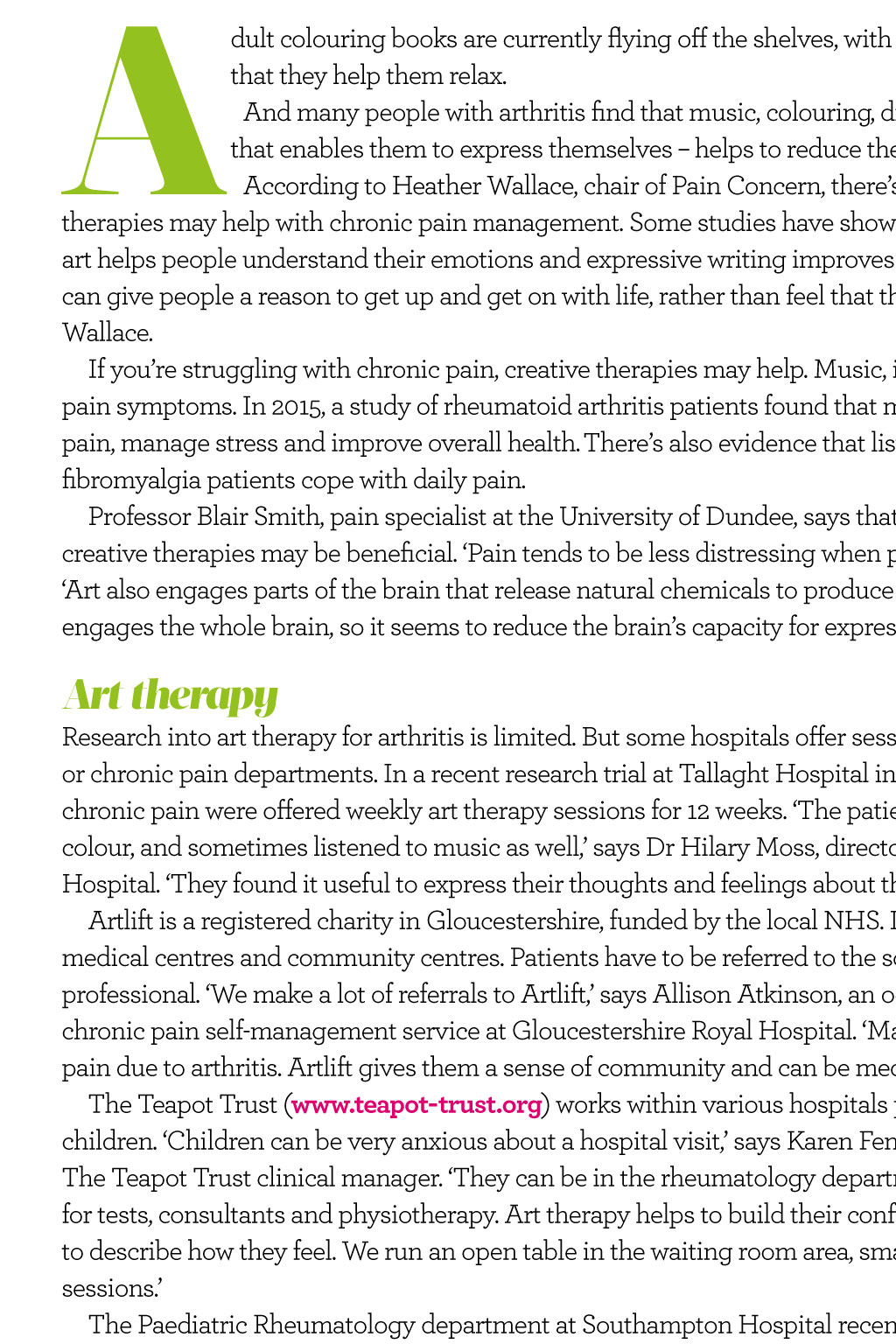
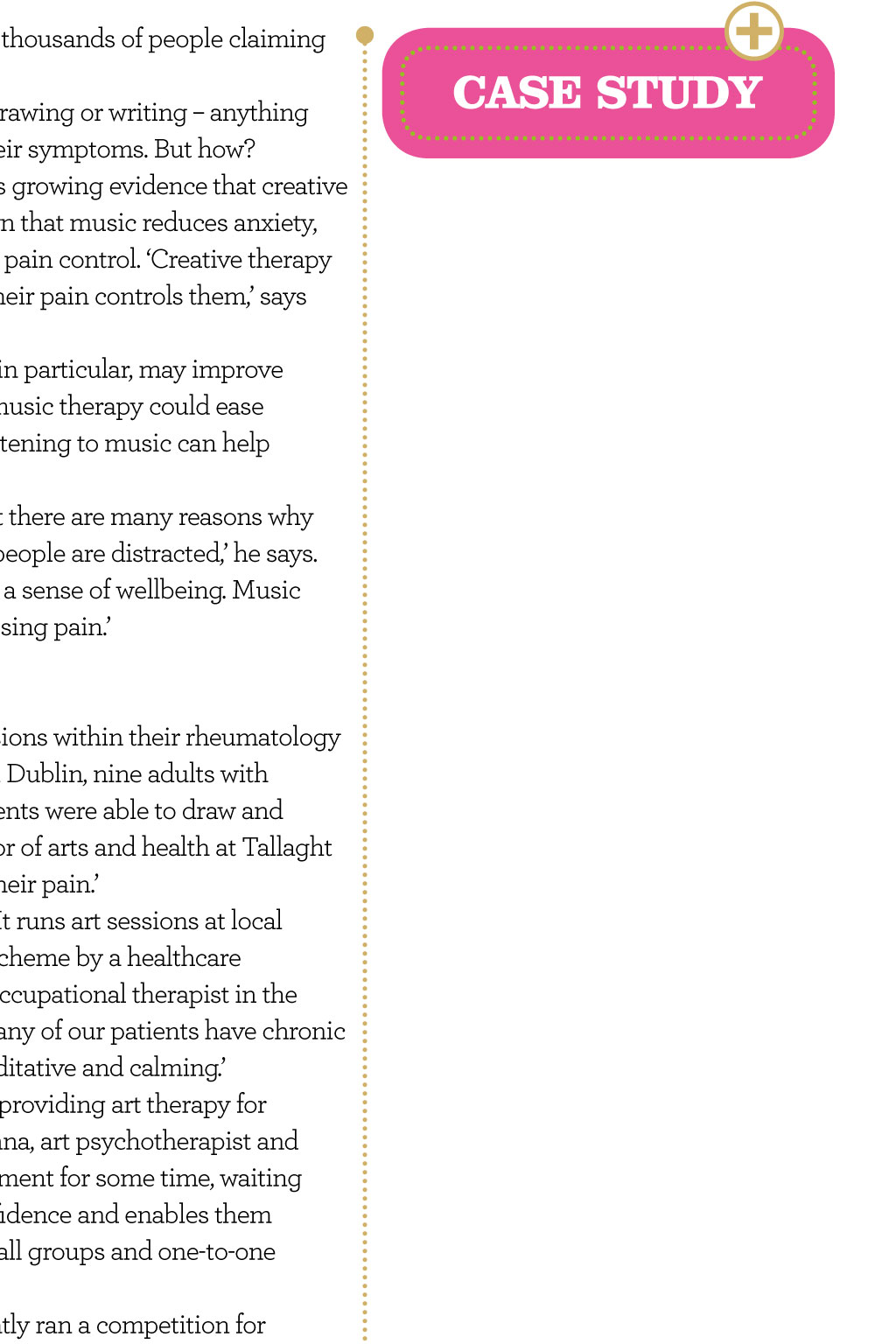
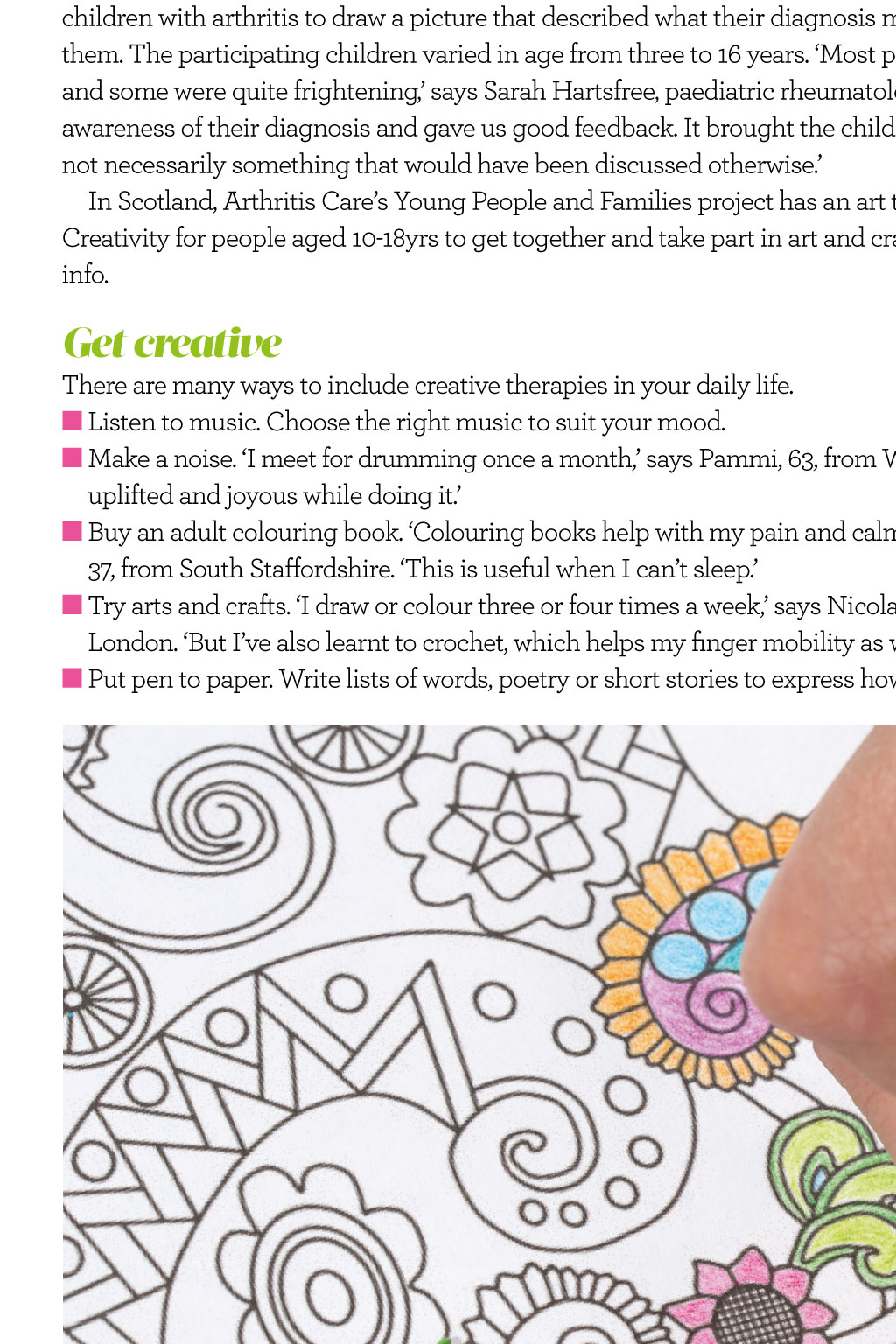
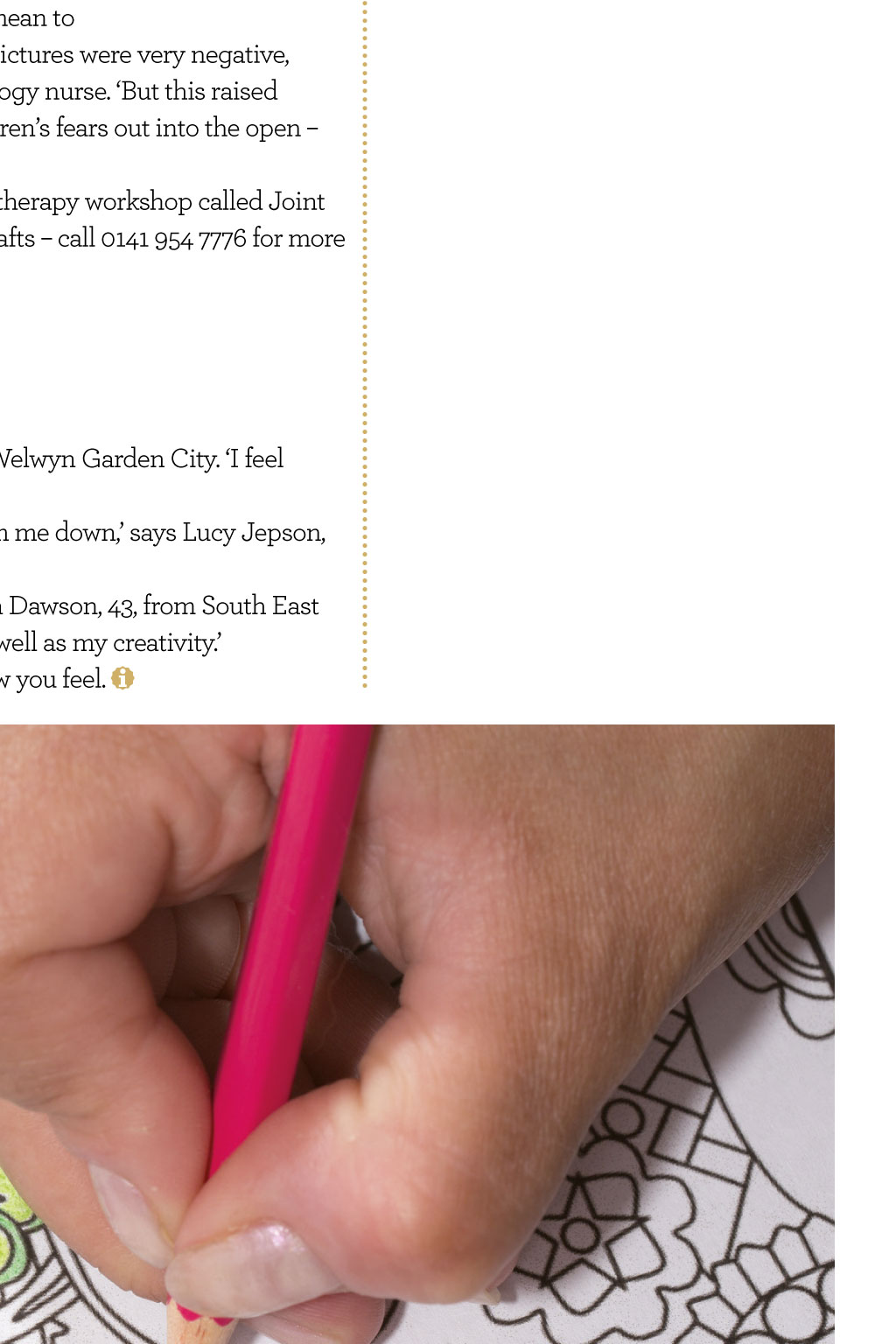
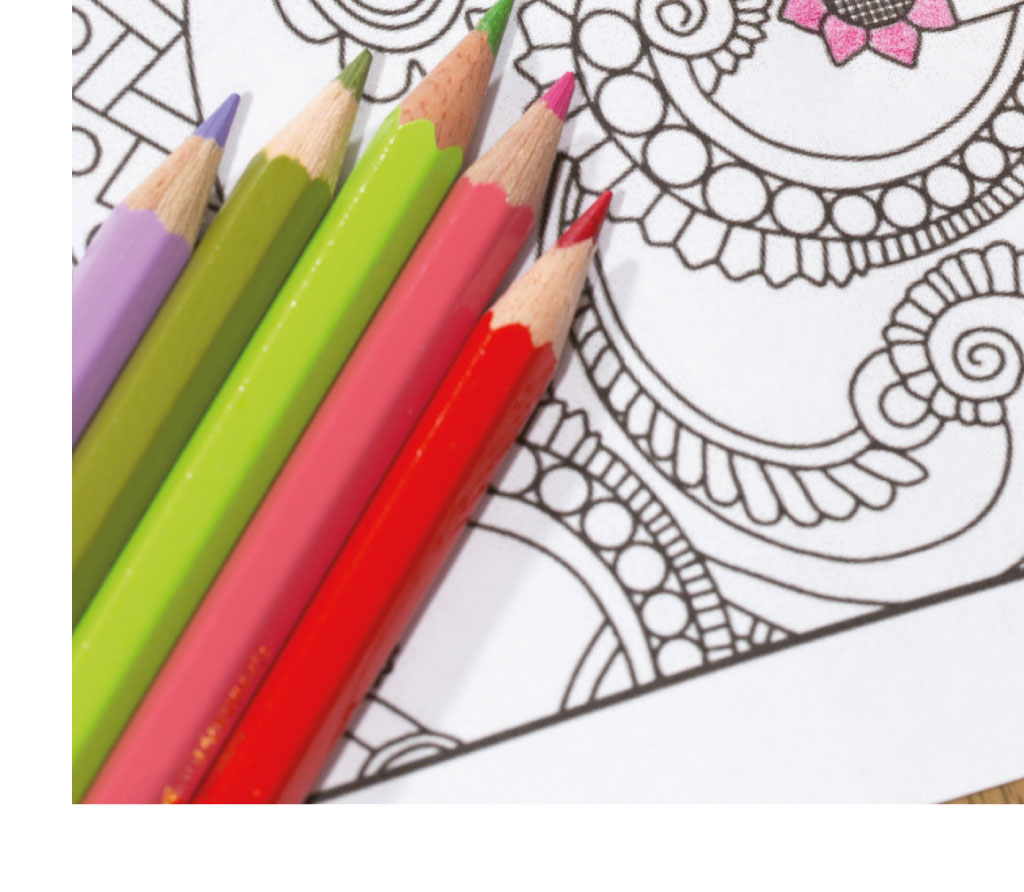
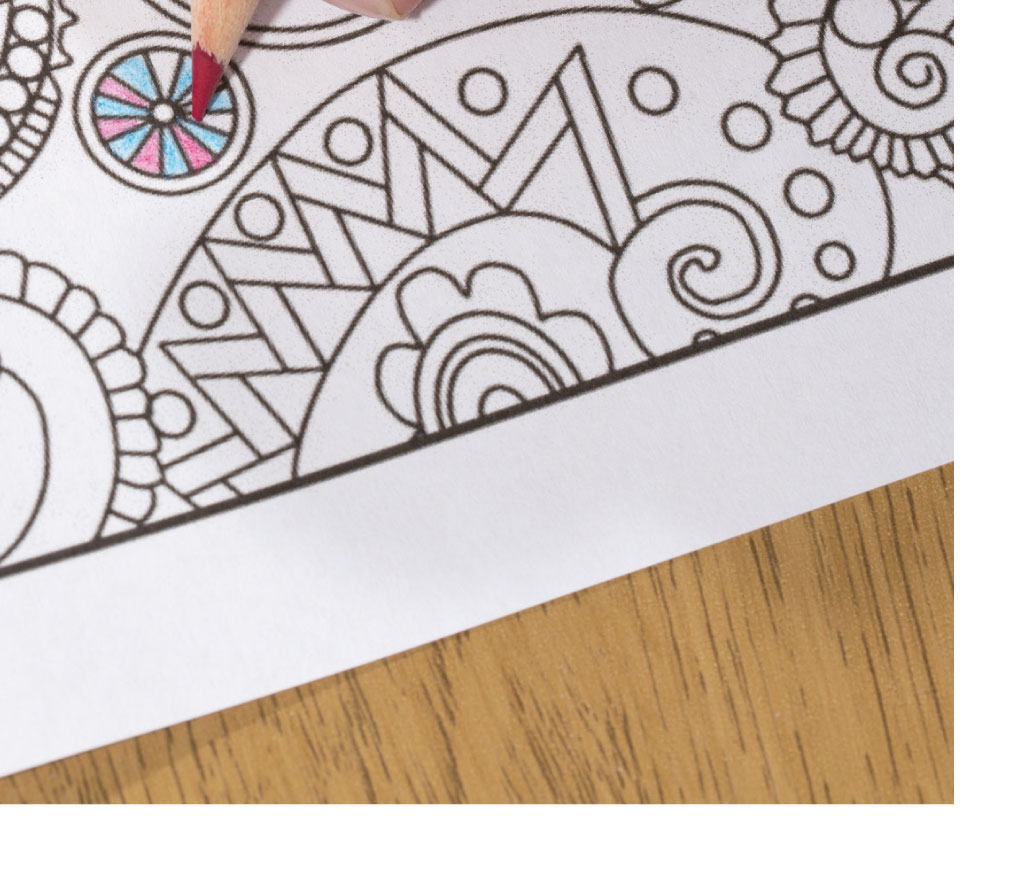








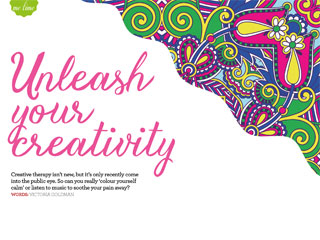
me time Unleash your creativity Creative therapy isnt new, but its only recently come into the public eye. So can you really colour yourself calm or listen to music to soothe your pain away? words: vICtorIa Goldman a dult colouring books are currently flying off the shelves, with thousands of people claiming that they help them relax. And many people with arthritis find that music, colouring, drawing or writing anything that enables them to express themselves helps to reduce their symptoms. But how? According to Heather Wallace, chair of Pain Concern, theres growing evidence that creative therapies may help with chronic pain management. Some studies have shown that music reduces anxiety, art helps people understand their emotions and expressive writing improves pain control. Creative therapy can give people a reason to get up and get on with life, rather than feel that their pain controls them, says Wallace. If youre struggling with chronic pain, creative therapies may help. Music, in particular, may improve pain symptoms. In 2015, a study of rheumatoid arthritis patients found that music therapy could ease pain, manage stress and improve overall health. Theres also evidence that listening to music can help fibromyalgia patients cope with daily pain. Professor Blair Smith, pain specialist at the University of Dundee, says that there are many reasons why creative therapies may be beneficial. Pain tends to be less distressing when people are distracted, he says. Art also engages parts of the brain that release natural chemicals to produce a sense of wellbeing. Music engages the whole brain, so it seems to reduce the brains capacity for expressing pain. Art therapy Research into art therapy for arthritis is limited. But some hospitals offer sessions within their rheumatology or chronic pain departments. In a recent research trial at Tallaght Hospital in Dublin, nine adults with chronic pain were offered weekly art therapy sessions for 12 weeks. The patients were able to draw and colour, and sometimes listened to music as well, says Dr Hilary Moss, director of arts and health at Tallaght Hospital. They found it useful to express their thoughts and feelings about their pain. Artlift is a registered charity in Gloucestershire, funded by the local NHS. It runs art sessions at local medical centres and community centres. Patients have to be referred to the scheme by a healthcare professional. We make a lot of referrals to Artlift, says Allison Atkinson, an occupational therapist in the chronic pain self-management service at Gloucestershire Royal Hospital. Many of our patients have chronic pain due to arthritis. Artlift gives them a sense of community and can be meditative and calming. The Teapot Trust (www.teapot-trust.org) works within various hospitals providing art therapy for children. Children can be very anxious about a hospital visit, says Karen Fenna, art psychotherapist and The Teapot Trust clinical manager. They can be in the rheumatology department for some time, waiting for tests, consultants and physiotherapy. Art therapy helps to build their confidence and enables them to describe how they feel. We run an open table in the waiting room area, small groups and one-to-one sessions. The Paediatric Rheumatology department at Southampton Hospital recently ran a competition for children with arthritis to draw a picture that described what their diagnosis mean to them. The participating children varied in age from three to 16 years. Most pictures were very negative, and some were quite frightening, says Sarah Hartsfree, paediatric rheumatology nurse. But this raised awareness of their diagnosis and gave us good feedback. It brought the childrens fears out into the open not necessarily something that would have been discussed otherwise. In Scotland, Arthritis Cares Young People and Families project has an art therapy workshop called Joint Creativity for people aged 10-18yrs to get together and take part in art and crafts call 0141 954 7776 for more info. Get creative There are many ways to include creative therapies in your daily life. n Listen to music. Choose the right music to suit your mood. n Make a noise. I meet for drumming once a month, says Pammi, 63, from Welwyn Garden City. I feel uplifted and joyous while doing it. n Buy an adult colouring book. Colouring books help with my pain and calm me down, says Lucy Jepson, 37, from South Staffordshire. This is useful when I cant sleep. n Try arts and crafts. I draw or colour three or four times a week, says Nicola Dawson, 43, from South East London. But Ive also learnt to crochet, which helps my finger mobility as well as my creativity. n Put pen to paper. Write lists of words, poetry or short stories to express how you feel. case study Trish OShea, 55, an artist and art teacher, has had arthritis for more than 15 years my drawings help me to explore and try to come to terms with my arthritis. painkillers may ease the pain, but they never take away the discomfort completely and dont deal with the psychological impact. i can get angry and sad about my arthritis, the pain and the debilitating effect it has, and i use marks, lines and words in my art to illustrate and visualise my emotions. it gives me a chance to have dialogue and a relationship with my arthritis.